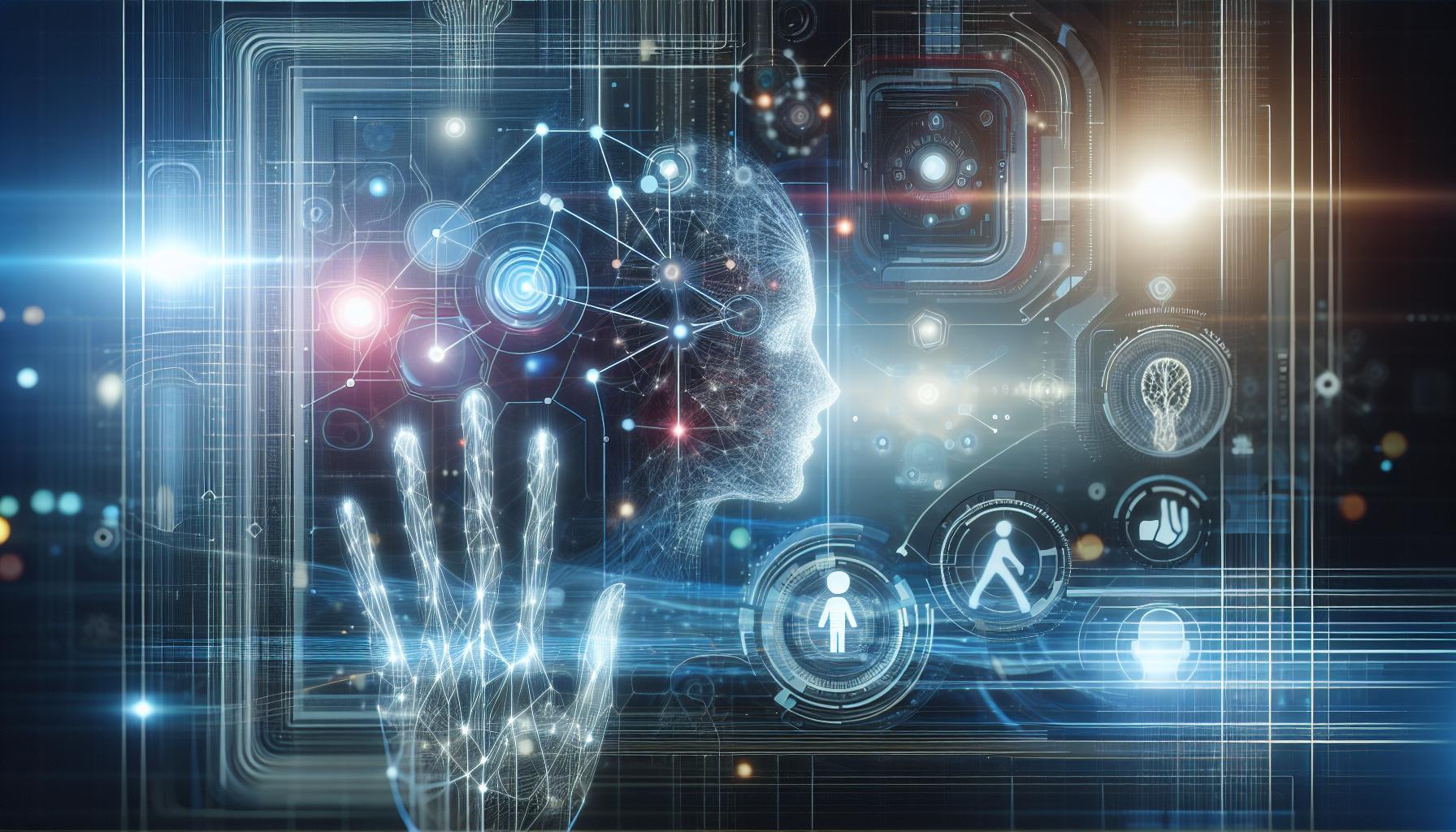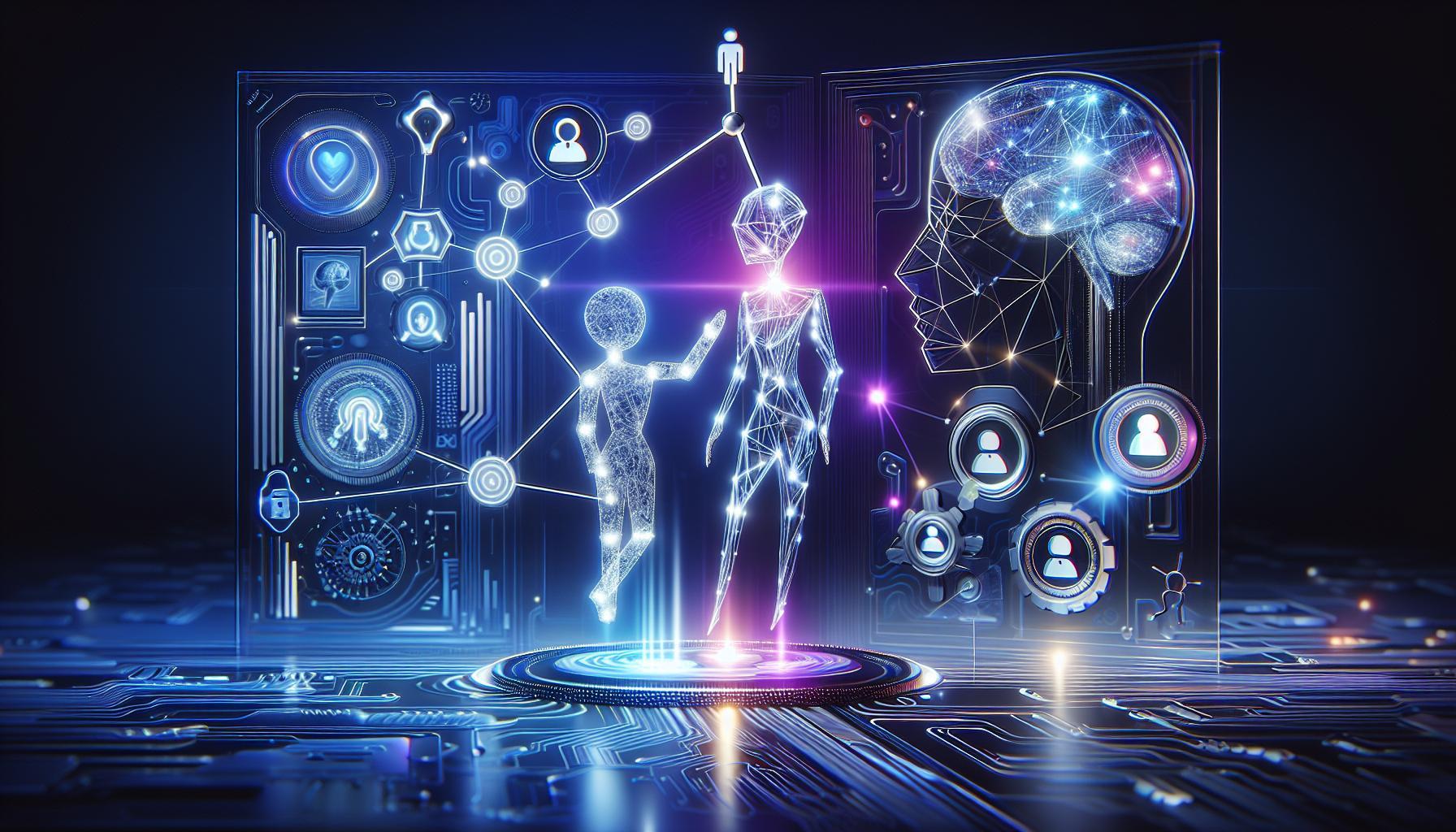As artificial intelligence reshapes the way we communicate, many are left wondering: is it safe to use AI voice changers for dubbing? While these tools offer exciting possibilities for content creation, concerns about security and privacy loom large. Understanding their implications is crucial for anyone looking to use this innovative technology wisely.
Understanding Dubbing AI Voice Changers: What Are They and How Do They Work?
In a world increasingly driven by visual content, dubbing AI voice changers have emerged as indispensable tools for content creators. These innovative technologies harness advanced artificial intelligence algorithms to manipulate and adapt voice recordings in various languages, thereby making multimedia content more accessible to diverse audiences. As these tools become mainstream, understanding their functionality and implications has never been more crucial.
Dubbing AI voice changers work by utilizing sophisticated machine learning principles, which analyze the original audio and create a voice model that can be used to generate speech in different languages or accents. This technology often involves steps such as transcription of the original audio, translation into the target language, and audio synthesis to create a voice-over that closely matches the emotional tone and inflection of the source material. For example, platforms like Typecast and InVideo offer services that allow users to dub videos seamlessly, enabling creators to reach audiences on platforms such as YouTube and TikTok with localized content [[1]](https://typecast.ai/multilingual-dubbing) [[2]](https://invideo.io/make/ai-dubbing/).
When using dubbing AI voice changers, users should remain conscious of security and privacy issues. It is essential to choose reputable platforms that prioritize data encryption and user confidentiality. Additionally, understanding how your audio files are stored and used by these services can prevent unintended breaches of personal information. When exploring the suitability of an AI voice changer, consider the following:
- Data Privacy Policies: Review the service’s terms regarding data handling.
- Usage Rights: Ensure you have the right to use the transformed voiceovers commercially if intended.
- Audio Quality: Test different tools to find one that meets your quality standards.
In practice, a wide range of applications exists for dubbing AI voice changers. From enhancing educational videos with multilingual support to transforming promotional content for global markets, the ability to personalize voiceovers opens numerous opportunities. By capturing the essence of the original video while effectively communicating across language barriers, content creators can broaden their impact and foster greater engagement with their audiences.
The Security Risks: Is Your Voice Data at Stake?

With the rise of AI technologies transforming the way we interact and communicate, voice data security has become a pressing concern. Many users are attracted to dubbing AI voice changers for their convenience and versatility, yet few truly understand the potential risks lurking behind these innovative tools. As voice synthesis technology improves, it opens the door to both beneficial and malicious uses, prompting questions about the safety and confidentiality of your voice recordings.
Understanding the Risks
When you utilize an AI voice changer, your voice data is often processed and stored on external servers, which increases the risk of unauthorized access. Here are some key vulnerabilities associated with using these applications:
- Data Breaches: Just like any online service, dubbing AI tools can be susceptible to cyberattacks. If these platforms are compromised, your voice data could be stolen and exploited for fraudulent activities.
- Malicious Use: Your voice, once recorded, can be manipulated to create deceptive audio clips that may be used for deepfake scams, misinformation, or impersonation.
- Third-party Access: Many applications may share data with third parties for marketing or analytics purposes without explicit user consent, potentially exposing your personal information.
Real-World Consequences
The implications of compromised voice data are not just theoretical; there have been notable instances where individuals have fallen victim to identity theft or disinformation campaigns due to misuse of voice technology. For example, deepfake technology has been employed in various scams, tricking victims into believing they are communicating with a trusted individual. Such scenarios highlight the urgency for users to arm themselves with knowledge about how their data is stored and used.
Protecting Your Voice Data
To safeguard against potential risks while using AI voice changers, consider the following actionable tips:
- Read Privacy Policies: Before using any dubbing AI tool, check their privacy policy to understand how your voice data will be managed and if it can be deleted upon request.
- Use Trusted Platforms: Stick to reputable applications known for strong security measures and positive user reviews.
- Limit Sharing: Avoid uploading sensitive or personal voice recordings unless absolutely necessary.
- Enable Two-Factor Authentication: If the application offers it, enable two-factor authentication to add an extra layer of security to your account.
By being proactive and informed, users can enjoy the revolutionary benefits of dubbing AI voice changers while minimizing the risks associated with voice data security.
Privacy Concerns: How Dubbing AI Handles Your Personal Information

The digital landscape is evolving rapidly, and with it, the use of Dubbing AI has raised significant questions regarding privacy and data security. As users increasingly turn to these innovative tools, it’s crucial to understand how these applications handle personal information. Many Dubbing AI platforms, while offering enticing features like voice modulation and text-to-speech capabilities, often require access to sensitive user data. This could include recordings, voice samples, and even personal identifiers, creating a potential risk for misuse or unauthorized access.
Data Handling Practices
When exploring the safety of tools like Dubbing AI Voice Changer, one must examine how user data is collected, processed, and stored. Typically, these platforms may collect data in the following ways:
- User Input: The voice samples or text provided by users serve as primary data inputs. These are crucial for training AI algorithms to improve accuracy.
- Usage Data: Many services track user interactions to enhance functionality and user experience, which can include everything from frequency of use to preferred features.
- Device Information: Data such as device type, IP address, and location may also be gathered to help optimize service delivery.
Each of these elements poses different privacy considerations. For instance, the use of personal voice recordings can lead to risks of identity theft or unwanted impersonation if they are not adequately protected.
Security Measures to Look For
When assessing the question, “Is Dubbing AI Voice Changer Safe? Security, Privacy, and User Tips,” it’s vital to identify the security measures implemented by the application:
- Data Encryption: Ensure that the platform uses encryption protocols for storing and transferring data to safeguard personal information.
- Clear Privacy Policies: Transparency in how user data is handled is essential. Look for platforms that outline their data usage practices clearly, allowing you to make informed decisions.
- User Control: Services that offer users control over their data, such as options to delete stored recordings or opt-out of data collection, are preferable.
These practices not only protect your personal information but also foster trust between users and the service providers.
Real-World Examples
There have been notable instances where Dubbing AI applications faced scrutiny over their data handling practices. For example, some services were found to unintentionally retain voice recordings even after users believed they had deleted them. Such occurrences highlight the importance of researching and choosing reputable services that prioritize user privacy in their operations.
By taking proactive measures to understand how Dubbing AI manages personal information, users can enjoy the benefits these tools offer while safeguarding their privacy. Engaging with platforms that prioritize security and transparency will enhance the experience, ensuring that your personal data remains protected against potential misuse.
Evaluating the Safety Features of Popular Dubbing AI Tools

In an era where technology is reshaping how we communicate and consume content, the rise of dubbing AI tools has sparked conversations not just about their capabilities, but also about their security and privacy implications. With numerous businesses and creators integrating these tools to enhance their media projects, understanding the safety features of popular dubbing AI software has never been more critical. The question on many users’ minds—Is Dubbing AI Voice Changer Safe?—is a complex one that intertwines functionality with security measures.
Key Safety Features to Consider
When evaluating the safety of dubbing AI tools, several core aspects come into play. These safety features can significantly impact user experience while ensuring that personal and sensitive data remain protected. Here are some essential factors to consider:
- Data Encryption: Leading dubbing AI software often employs encryption protocols to safeguard user data both during transmission and storage. Always check whether the tool uses industry-standard encryption, such as AES-256.
- User Consent and Transparency: Reputable tools should clearly outline how user data is collected, used, and shared. Look for transparency in their privacy policies, and ensure that you have control over your own data.
- Regular Software Updates: Developers who prioritize security will frequently update their software to fix vulnerabilities and enhance features. Keeping your version up to date is an essential practice.
- Community Feedback and Reviews: User reviews can reveal a lot about a tool’s safety. Investigate how peers have rated their experiences regarding security and privacy, especially in forums dedicated to AI and voice technology.
Practical Tips for Users
To ensure a secure experience while using dubbing AI tools, users can adopt practical strategies. Here’s what to keep in mind:
- Read the Fine Print: Before signing up for any service, review the terms of service and privacy policy to understand your rights and any potential risks.
- Use Anonymous Accounts: If you’re concerned about privacy, consider using an email without personal identifiers when registering for dubbing services.
- Limit Personal Data Sharing: When possible, avoid sharing sensitive personal information, such as credit card details or identification documents, unless necessary.
- Engage with Trusted Tools: Stick to well-known brands with a proven track record in security and privacy. Researching the company behind the software can provide insight into their commitment to user safety.
| Feature | Importance | How to Check |
|---|---|---|
| Data Encryption | Protects your data from unauthorized access. | Look for HTTPS in the URL and inquire about encryption standards. |
| User Consent | Ensures you know how your data will be used. | Read the privacy policy for clarity on data handling. |
| Updates | Keeps software secure from vulnerabilities. | Check if the tool has a regular update schedule. |
| Community Ratings | Provides insights from other users. | Explore user reviews and forums for feedback. |
By leveraging these safety features and practices, users can enhance their overall experience with dubbing AI tools while minimizing potential risks. Understanding the question Is Dubbing AI Voice Changer Safe? is crucial for informed decision-making, ensuring that both creativity and privacy are safeguarded in this digital landscape.
Best Practices for Using Dubbing AI Voice Changers Securely

In today’s digital landscape, leveraging AI voice changers can elevate your communication and gaming experiences, but it’s essential to prioritize safety and security while using these tools. Ensuring a secure environment not only protects your personal information but also enhances your overall experience with Dubbing AI voice changers. By following best practices, you can confidently enjoy the features these advanced tools provide without compromising your privacy or security.
Choose Reliable Platforms
When selecting a voice changer, it’s crucial to use reputable platforms that prioritize user security. Look for tools that offer clear privacy policies and have positive user feedback. Avoid downloading software from unknown sources, as they may contain malware or hidden risks. For instance, Dubbing AI has established itself as a trustworthy option due to its robust security features and consistent updates to their AI models, ensuring a reliable experience for users [[1](https://dubbingai.io/voice-changer/phoenix)].
Utilize Secure Connections
Always use secure and private internet connections. Free public Wi-Fi networks can expose your data to potential threats. Instead, opt for secure home networks or a reputable VPN when accessing voice changer services. This extra layer of encryption safeguards your personal information during voice transformations, making it harder for hackers to intercept your data.
Monitor Permissions and Data Sharing
Be mindful of the permissions you grant to voice changer applications. Limit access to only the necessary features required for functionality. Regularly review the app’s permission settings to ensure that no additional information is unnecessarily collected. Engaging with platforms that are transparent about their data usage policies – like Dubbing AI – can enhance your peace of mind regarding your security [[2](https://dubbingai.io/explore)].
Stay Informed and Updated
Keeping your software updated is vital. Developers continuously patch vulnerabilities and improve security features. Subscribe to notifications from your voice changer provider or check their website regularly for updates. Additionally, staying informed about potential threats and new security practices will empower you to use these tools safely.
By implementing these practices, users can mitigate risks associated with AI voice changers while enjoying the vast capabilities they offer, all while addressing key concerns related to security and privacy. As you navigate this exciting technology, remember that informed usage leads to not only enhanced communication but also a secure online experience.
User Tips: Enhancing Your Experience While Protecting Your Data
In an era where voice modulation technology is rapidly advancing, many users are drawn to the potential for creativity and fun that dubbing AI voice changers can offer. However, while experimenting with these tools, it’s paramount to keep your security and privacy intact. Here are effective tips that not only enhance your experience but also safeguard your personal data while using dubbing AI voice changers.
Understand the Software’s Permissions
Always review the permissions required by any dubbing AI voice changer before installation. Many applications may request access to your microphone, contacts, or storage. Before granting these permissions, consider the necessity of each:
- Microphone Access: Essential for any voice-changing application, but ensure that the app does not continuously listen without your consent.
- Storage Access: If you’re uploading or saving voicemails or audio files, confirm that this access is limited to what you need.
- Contact Access: Be wary of apps that ask for your contacts—it’s typically unnecessary for voice-changing functions.
Use Strong Passwords and Two-Factor Authentication
Your accounts associated with any dubbing AI software should be protected with robust passwords and, if available, two-factor authentication (2FA). This practice drastically reduces the risk of unauthorized access to your personal information. When choosing a password, consider using a mix of letters, numbers, and symbols, and avoid using easily guessed information like birthdays or pet names.
Be Cautious with Shared Content
When you create audio content for sharing or collaborative projects, think twice about the data contained within that audio. Even innocent-sounding files can potentially reveal more than intended—especially if they contain metadata that discloses other information. Use audio editing software to strip out metadata before sharing:
| Action | Description |
|---|---|
| Remove Metadata | Use tools or apps that specifically allow you to create clean audio files without embedded data. |
| Limit Sharing | Only share your audio files on platforms that prioritize privacy and security. |
| Regularly Review Shared Files | Conduct periodic checks of your uploaded content and remove anything outdated or unnecessary. |
By adhering to these practical recommendations, you can enjoy the innovative features of dubbing AI voice changers while maintaining robust protection over your personal data and privacy. Equip yourself with knowledge and caution, and the world of AI voice modulation can become a safe playground for your creativity.
The Future of Dubbing AI: Trends and Safety Innovations
As technology continues to evolve, the world of dubbing is rapidly transforming, driven by advancements in artificial intelligence. With the rise of AI-powered voice changers, the industry is witnessing a paradigm shift that combines creativity with efficiency. However, this evolution raises important questions about security, privacy, and user safety. Understanding the implications of these trends is essential for content creators and consumers alike.
Emerging Trends in Dubbing AI
One of the most significant trends in dubbing AI is the increasing use of machine learning algorithms that can mimic human emotions and vocal nuances. These algorithms are trained on vast datasets, allowing them to produce natural-sounding dialogues that closely replicate original performances. Some noteworthy trends include:
- Personalization: AI systems now enable tailored voice modulation, allowing users to create unique vocal identities that reflect their brand or personal style.
- Language Expansion: Advances in AI are making it easier to generate voices in multiple languages, broadening the accessibility of content across global markets.
- Real-time Dubbing: New technologies offer the potential for live dubbing, facilitating international events and broadcasts without significant delay.
Safety Innovations in Deploying Dubbing AI
As dubbing technology evolves, so does the need for stringent safety measures to protect user data and ensure ethical practices. The focus on security has prompted developers to implement various innovations, such as:
- End-to-End Encryption: This ensures that user-uploaded content remains secure throughout the dubbing process, safeguarding sensitive material from unauthorized access.
- Consent Protocols: Developers are incorporating clearer consent guidelines, ensuring that voice models are used only with the owner’s approval, thus enhancing privacy.
- AI Auditing: Regular audits of AI-generated content are becoming commonplace to identify and mitigate biases or unethical uses of voice technology.
Real-World Applications and User Considerations
From movies and video games to virtual reality experiences, the applications of dubbing AI are boundless. However, users should remain vigilant to ensure their safety and privacy. Here are steps users can take to mitigate potential risks:
| Tip | Description |
|---|---|
| Review Privacy Policies | Always read the privacy policies of dubbing software to understand how your data is used. |
| Control Voice Samples | Limit the number of voice samples uploaded and ensure they are necessary for the dubbing process. |
| Use Trusted Platforms | Select reputable providers with strong safety protocols and positive user feedback. |
As the landscape of dubbing AI continues to shift, staying informed about both the technological advancements and the accompanying security measures is essential. Users who navigate these innovations with caution and awareness can fully harness the power of dubbing AI while protecting their privacy and creative integrity.
Real-World Applications: Where and How is Dubbing AI Being Used?
In an increasingly globalized world, the demand for content localization has soared, making AI dubbing a pivotal technology in various industries. This sophisticated technology has revolutionized how videos, films, and educational materials are produced and disseminated, enabling creators to reach diverse audiences effortlessly. Businesses can now tap into international markets with ease, ensuring their narrative resonates universally without compromising emotional nuance.
Media and Entertainment
The film and video game industries have been early adopters of AI dubbing, significantly enhancing the viewer experience. For example, platforms like Kapwing allow creators to dub content in over 40 languages, automatically syncing audio with lip movements to maintain authenticity. This capability is invaluable for studios producing multilingual films or games, ensuring that cultural nuances are respected while maximizing audience reach. Moreover, services like Typecast leverage advanced AI to preserve emotional tones, allowing characters to remain relatable across languages.
Education and Training
AI dubbing has also found substantial applications in the educational sector. E-Learning platforms utilize dubbing tools to translate instructional videos into multiple languages, making quality education accessible to non-native speakers. For instance, organizations can quickly produce bilingual training materials, enhancing learning engagement for diverse groups. Tools like Flixier not only facilitate AI voice generation in various languages but also allow educators to personalize their audio content, catering to specific learner demographics.
Marketing and Advertising
Marketers are harnessing the power of AI dubbing to create impactful advertising campaigns tailored to local audiences. By using automated dubbing solutions, brands can swiftly produce advertisements in multiple languages without the logistical challenges of traditional dubbing. This immediacy not only boosts campaign efficiency but also allows brands to respond quickly to market demands. For instance, a company can launch a product globally with localized ads, helping to establish a strong foothold in new regions.
In conclusion, the applications of AI dubbing go beyond mere translation; they represent a profound change in how content is created and consumed. As this technology continues to evolve, considerations such as security, privacy, and user tips become increasingly essential in ensuring safe and effective use, especially in professional settings. By understanding the best practices surrounding AI dubbing, users can confidently navigate this dynamic landscape, reaping the benefits while mitigating risks.
Q&A
Is Dubbing AI Voice Changer Safe? Security, Privacy, and User Tips
What is a Dubbing AI Voice Changer?
A Dubbing AI Voice Changer uses artificial intelligence to modify and synthesize speech, allowing users to change their voice for various applications, such as editing videos or creating voiceovers.
These tools leverage sophisticated algorithms to mimic different voices and tones, providing functionalities for both professional and personal use. It’s essential to understand the potential applications and limitations of these technologies.
Is Dubbing AI Voice Changer Safe for Personal Use?
Generally, yes, but safety depends on the platform you choose. Ensure it has strong privacy policies and secure tools to protect your data.
When using an AI voice changer, take care to read its terms. Platforms with transparent data handling practices are usually more reliable. For detailed guidance on safety, you can refer to our User Tips section.
Can I maintain my privacy while using AI Voice Changers?
Yes, by choosing platforms that prioritize user privacy and data encryption. Always research security features before using a service.
Look for services that do not store your voice data or that allow you to delete your files after processing. Using anonymous accounts can also help enhance your privacy when experimenting with voice dubbing tools.
Why does the Dubbing AI Voice Changer need access to my microphone?
Access to your microphone is necessary for the AI voice changer to capture your voice and apply the desired modifications effectively.
This feature enables real-time voice alterations, enhancing the quality of audio outputs. Still, it’s crucial to only grant permission to trusted applications to avoid potential security risks.
What should I consider when choosing a Dubbing AI Voice Changer?
Consider factors like user reviews, data security features, ease of use, and the availability of various voice options. These elements can impact your overall experience.
Additionally, verify if the tool supports multiple languages and accents, which can enhance your dubbing projects. Always look for detailed user guides and support to aid your learning.
Can I use a Dubbing AI Voice Changer for commercial purposes?
Yes, provided the terms of service allow it. Always check the licensing agreements of the specific tool to ensure compliance with legal requirements.
Different platforms may have different usage licenses, impacting whether you can monetize content generated using their voice-changing technologies. It’s vital to have this clarity to avoid potential copyright issues.
What are some safety tips for using Dubbing AI Voice Changers?
Always use reputable software, and consider anonymizing your voice recordings. This enhances your safety and protects your identity.
Additionally, familiarize yourself with the privacy settings and user agreements of the software you choose. Regularly update your applications to ensure you have the latest security features.
Insights and Conclusions
In conclusion, navigating the world of AI voice changers can be both exciting and daunting. As we’ve explored in this article, the safety of using dubbing AI voice changers hinges on several key factors—security measures, privacy considerations, and best practices for users. Understanding how these technologies operate, including the importance of choosing reputable platforms and maintaining awareness of your digital footprint, is essential for protecting your personal information.
For those interested in harnessing the power of AI voice changers, being informed is your best asset. Take the time to research different options, read user reviews, and stay updated on any potential risks. Equip yourself with knowledge about the tools you use and the implications they carry.
We encourage you to delve deeper. Explore more about AI technologies, investigate new trends in voice modulation, and consider how these innovations can enhance your creative projects. By fostering a curious mindset and staying informed, you can utilize these tools confidently and safely. Happy exploring!





